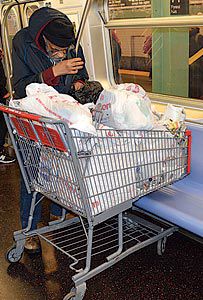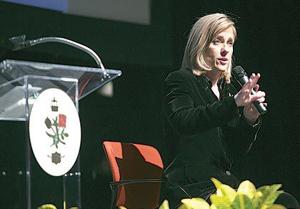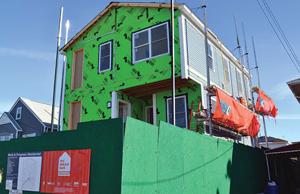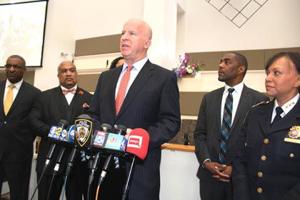January wasn’t too snowy, aside from one significant storm, but even the most diehard winter lovers would admit that the first month of 2018 was a brutally cold one.
And with the temperatures below freezing for days at a time, officials say many of the city’s approximately 3,900 homeless people on the street took shelter in the subway system — either in stations, on platforms or in the train cars.
The swarming of the heated subways was especially noticeable in early and mid-January, as the mercury failed to reach the freezing mark for two straight weeks.
In response, the Mayor’s Office said it has significantly increased the number of transit system canvassers from its nonprofit service provider, Bowery Residents’ Committee, from 20 to more than 100, while scheduling more joint operations between the NYPD and BRC.
“Being homeless is not a crime. And it can take extensive, repeated contacts with those living on the street to build up the trust it takes to convince them to come to a shelter,” Department of Homeless Services spokesman Isaac McGinn said in a statement. “That mission becomes all the more critical during extreme weather, which is why we’ve expanded our outreach teams and opened more temporary shelters for those out in the cold or seeking shelter in subways.”
Homeless individuals spend their time riding every subway line, but most often occupy the E train, as it’s the only line that runs entirely underground and out of the elements.
According to The New York Times, outreach teams interacted with 70 homeless people riding a single Manhattan-bound E train at 2:30 a.m. on Jan. 14.
In response, the Mayor’s Office said BRC outreach teams are making multiple daily visits to each E train station, as well as every end-of-line stop.
Meanwhile, it is NYPD Transit Bureau officers who are tasked with riding the cars and checking on any homeless person they come across.
That initiative, known as HOME-STAT — homeless outreach and mobile engagement street action teams — has averaged 248 shelter placements a month in fiscal year 2017, an increase of 31 percent from the year before.
During the most recent, 16-day cold snap from late December to mid-January, there were 215 people placed in shelters across the city.
But one of the big issues, according to Coalition for the Homeless Policy Director Giselle Routhier, is that too many homeless people the outreach teams speak to still decline repeated requests to go to a shelter.
“Ultimately, most folks on the streets need housing and would not say no to an offer of housing,” Routhier said.
Keeping the subway system relatively clear of homeless people during the winter is an impossible task. But the CHP official said a long-term solution is building more affordable housing.
Routhier applauded Mayor de Blasio’s committment to do just that, but called on the city to get even more ambitious.
“What we’re doing is pushing for a broader solution,” she said. “We’ve called on him to build 10,000 units of housing specifically for people who are homeless over the next five years. That will ultimately get to the root of the problem.”
When the temperature is forecast to dip below 32 degrees between 4 p.m. and 8 a.m., the city issues a Code Blue alert, doubling the size of outreach teams and increasing the number of visits made to each homeless person on the street or in the subway system.
Code Blue alerts are expected to be issued Thursday, Friday and Saturday, as the mercury isn’t expected to rise about 30 during those nights, with more subfreezing weather expected next week.

 Katz reveals plan for Census count in Qns. 1
Katz reveals plan for Census count in Qns. 1 Howard Beach resident is coming back home 1
Howard Beach resident is coming back home 1 Clergy, cops break bread in Jamaica 1
Clergy, cops break bread in Jamaica 1
Welcome to the discussion.
Log In
Sign Up